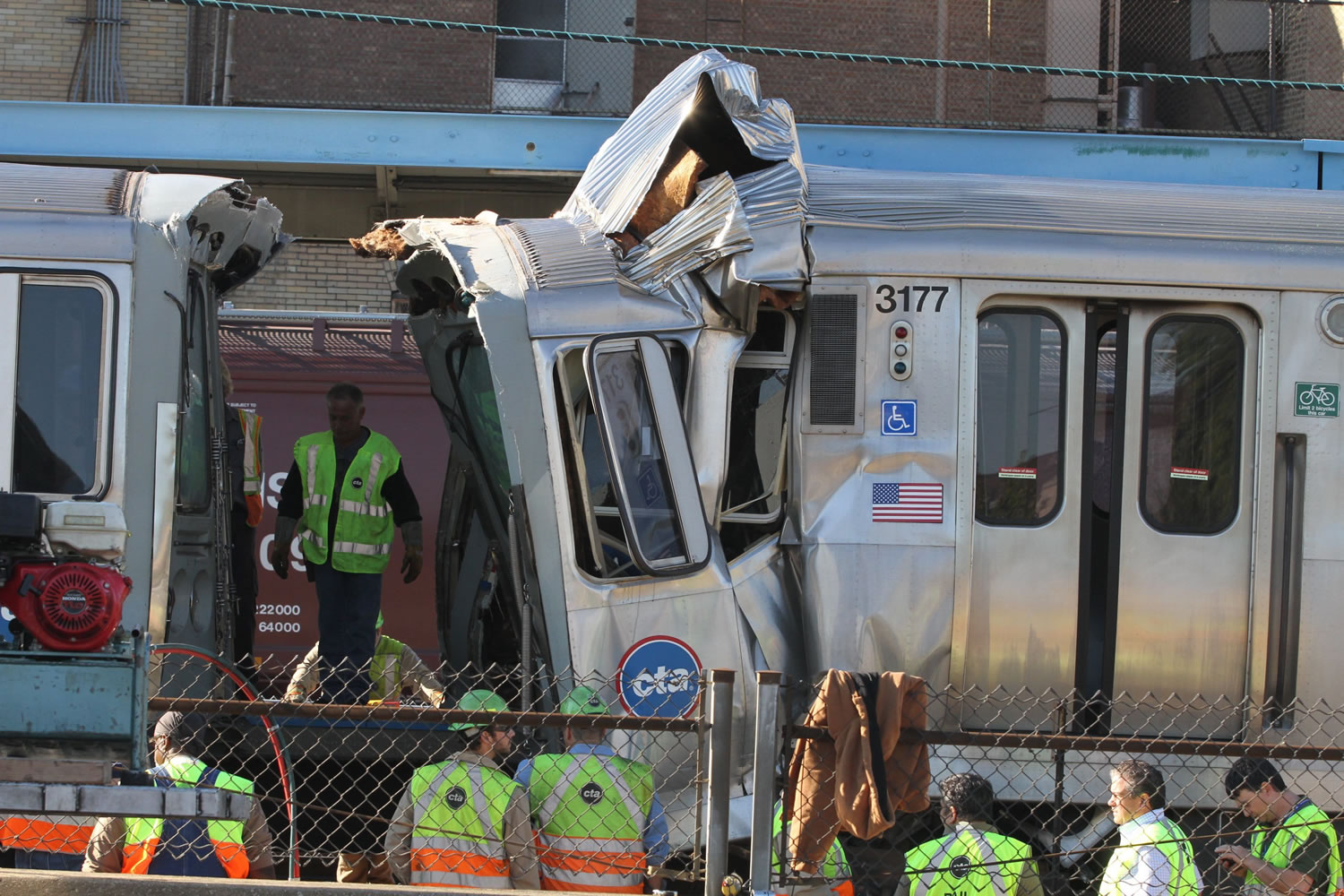CHICAGO — Investigators face the daunting task of sorting out the half-mile journey of an out-of-service, possibly driverless, Chicago Transit Authority train that breached multiple safeguards before colliding with another Blue Line train Monday morning.
The incident that sent more than 30 people to the hospital was unlike any that city rail workers say they have seen: A train maneuvers around the curves in the Forest Park rail yard, passes through track switches — any one of which should have stopped the train — continues past the station platform, then climbs a small hill near the Eisenhower Expressway before accelerating to about 20 mph and ramming the stopped train at the Harlem stop shortly before 8 a.m.
Forty people were aboard the standing train during the head-on crash. Most of those hurt reported only light injuries.
The National Transportation Safety Board is leading the investigation into the crash. As a precaution, the Federal Joint Terrorism Task Force also is involved, an official said.
Several systems are set up along the route to prevent such as crash.
If the train were properly parked in the yard, the brakes would be applied to prevent the cars from moving, regardless of whether power was being delivered to the train, CTA officials and rail workers said.
Two keys — one for the cab door, and one to turn on the controller and release the brakes — are needed to operate the train, according to CTA operators. To prevent a runaway train, the operator must turn and keep a hand on the controller handle to release the brakes and deactivate the “dead man switch.” If the handle is released while the train is moving, the motor shuts off and the brakes are applied, officials said.
The cab signal also beeps when a train is exceeding the speed limit and gives the operator two seconds to reduce speed before it applies the brakes.
At the track, devices are supposed to put the train into emergency braking mode if it doesn’t line up properly.
Unlike on commercial airplanes, CTA trains have no “black boxes” that record data. But cameras on the trains, in the stations and at the yard will help tell what happened, CTA spokesman Brian Steele said.
A review of video shows no operator at the controls of the out-of-service train, he said, adding that there also were no signs of forced entry or vandalism to the train. But that review does not show whether someone was in another part of the head car or in the other three cars attached to it, he said.



